Intro to Pay-Per-Click (PPC) Marketing:

Pay-Per-Click (PPC) Marketing
Your brand has the power to reach millions of people around the world, and it only takes a few minutes to do so. The power of pay-per-click (PPC) marketing is incredible, with a huge reach and the ability to target specific audiences.
Investing in PPC marketing can bring a great return for your business (Google estimates businesses earn $11 in profit for every $1 they spend on Google Ads), but it’s also an easy way to lose money if you don’t approach it in the right way.
What is PPC marketing? How can you make the most of it?
These are questions I’m about to answer. To help make sure you’re getting your PPC right, here’s my introduction to PPC for beginners.
What is pay-per-click (PPC) marketing?
PPC marketing is a common online advertising model. It allows advertisers to place ads on search engines, social media platforms, and third-party websites, paying a fee whenever the ad is clicked.
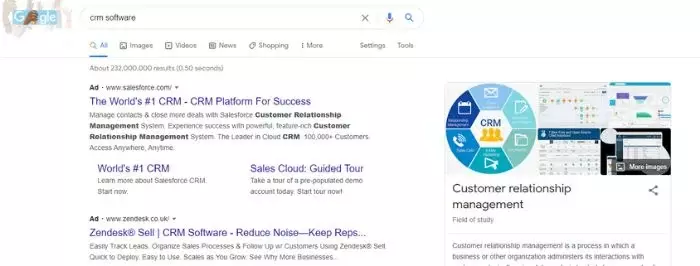
Generating over $134 billion in ad revenue, Google is the largest provider of PPC services. Its platform, Google Ads, is often the first stop for people beginning PPC marketing.
Paid advertising is one of the best marketing channels when it comes to ROI. Google estimates that businesses gain $2 for every $1 they spend on Google Ads.
One of the main reasons that you can achieve such a good ROI with paid search is that you can target ad copy keywords with high buyer intent. This improves your ad rank and even your quality score.
How Much Is PPC Advertising?
If you’re thinking about investing in PPC marketing, you’ll want to know how much it’s going to cost you. With PPC, this can be a little complicated.
Online advertising isn’t like taking out an ad in a magazine, where you pay a fee and you get a full-cover page. Instead, with PPC marketing, you pay when you get results (someone clicking your ad).
With offline advertising, you tend to pay a set fee regardless of the results you achieve. With PPC marketing, you’ve got more control over how much each truly engaged consumer costs you.
This plays out through an auction system. Unlike a traditional auction, though, there isn’t one product with one winner—you’re bidding on how high up and how often your ad will be visible. “Losing” the auction doesn’t necessarily mean you get no PPC space—it means you get less.
Whenever a user searches for a certain keyword, say “what is PPC in marketing,” Google looks through its list of advertisers for this word and initiates an auction between them. A Google algorithm then chooses ads based on each advertiser’s maximum bid and the quality score of each ad.
The big takeaway from this is that it’s not just about how much you bid. The quality of your ad plays a huge part as well.
That said, if your max bid isn’t high enough, then your ads aren’t going to be shown often enough to be worthwhile. Different keywords have different average costs per click, and this should inform your bidding strategy.
Tools such as Ubersuggest and Google Ads Keyword Planner could give you a good feel for how much your ads are likely to cost, so they should play a role in your keyword research.
Is PPC Marketing Right for My Company?
Like any form of marketing, pay-per-click advertising has its pros and cons. Ideally, your company will use PPC marketing as part of a complete digital marketing strategy, so you can maximize its strengths and minimize its weaknesses.
Pros of PPC Marketing
There are obviously some pretty significant benefits to PPC, otherwise I wouldn’t be dedicating an entire article to it. These benefits include:
- Immediate results: As soon as your ads are approved, your advertiser will put them in front of your target audience. Unlike with SEO, you don’t have to spend months waiting to see results.
- Highly targeted: You can be extremely specific about who sees your ads. You don’t just refine users by keyword, either. Some platforms let you drill down into incredibly specific demographics.
- Easy to track: You can quickly track the success of your campaign and measure your ROI. Almost every PPC marketing channel has an analytics component built in.
- Potentially huge exposure: Paid ads are prominently displayed, with the potential to reach a virtually unlimited number of people.
- It’s predictable: With a PPC campaign, your visitors are directly tied to how much you spend and the search engine algorithm is less of a factor. Spend more, get more visitors.
- It’s extremely easy to scale: If you’re having good results with your PPC marketing and want to scale up your efforts, all that you do is raise your budget a bit (or target additional keywords/audiences).
- More time to focus on the product: This is one commonly overlooked aspect of PPC. It doesn’t take much time to run a PPC campaign. As you’ll see, there’s a bit of setup time, especially when you’re new to PPC marketing, but you’ll get much quicker as you gain comfort with starting and managing campaigns.
Cons of PPC Marketing
PPC marketing isn’t a perfect customer acquisition channel, however. There are some negatives you need to consider:
- Costly long-term option: You have to pay for every click, leaving you in the hands of advertising pricing. If you do this for months or years, it’ll add up. That’s why it’s so important to generate positive ROI.
- Not building an asset: When you invest in content marketing or building an email list, you’re creating an asset you own. With PPC marketing, your success is reliant on continued ad spend.
- It can be competitive: Depending on what keywords you bid on, the PPC landscape can be highly competitive. Even with high bids and well-chosen keywords, there’s no guarantee your ad will consistently appear above your competitors.
This is why my own digital marketing agency works to create a well-rounded digital marketing plan for your business. PPC has some amazing benefits, but you need good marketing in other areas as well.
PPC isn’t a replacement for organic SEO. The two should complement each other, with organic work taking a good amount of your focus because those clicks are free.
There’s Much More Than Just Google Ads
If you’re not very experienced with PPC marketing, you probably equate PPC with Google Ads. You’re not far off, because Ads is by far the biggest advertising network.
Google makes hundreds of millions per day through Ads. And you can get traffic in just about any niche because Google has so much traffic. Google is also amazing for conversions, since you can target keywords with high commercial intent.
However, Google is not your only option.
Some businesses thrive on Ads, while others struggle to make a profit. Then, when they try a different PPC network, they have great success.
The best network for you and your business will depend on your knowledge, niche, audience, product, and many other factors. The only way to find your best network is to give a few different ones a try.
Keep an open mind and consider other options. Here are some of the other biggest PPC campaign networks that are fairly beginner-friendly and might be worth a try.
Bing Ads:

Bing is nowhere near the size of Google, but by normal measurements, Bing/Yahoo! is still huge for everything from text ads to banners.
Its advertising network is also well-developed and offers many of the same benefits as Google Ads.
However, Bing also has a lower cost per click (CPC) and often converts just as well. Obviously, this means that it’s easier to run a profitable PPC ad copy campaign. For example, WordStream recently noted that almost all of their clients were able to get lower CPCs on Bing’s network (about 33.5 percent cheaper).
If you’re struggling with the high cost of Google Ads, you might have a good bit less competition on Bing without any big sacrifices.
Meta Ads:
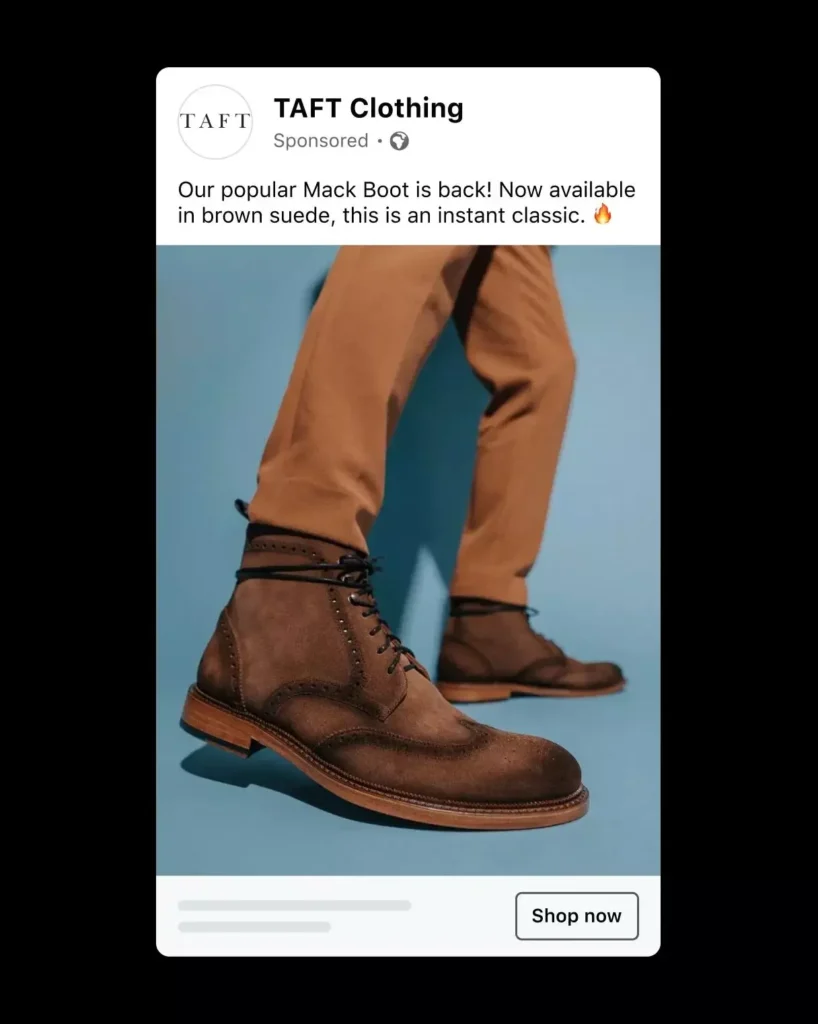
Social media giant, Meta, has its own advertising platform for Facebook and Instagram—and it’s pretty simple to use ad text and pictures for PPC marketing success.
The two platforms are slightly different. On Facebook, you can place ads aimed directly at your content, landing pages, or to get “likes” for any of your shares.
On Instagram, you can boost your post, promote your online store, and create branded content.
Paid advertising on social media isn’t based on keywords, so text ad campaigns are not successful. You can’t target someone at the exact moment they want to buy a toaster. However, you can look at their interests and demographic information to connect with your target audience.
If you combine content marketing with Facebook advertising or Instagram advertising, you can create a powerful funnel that will lead to sales.
LinkedIn Ads:
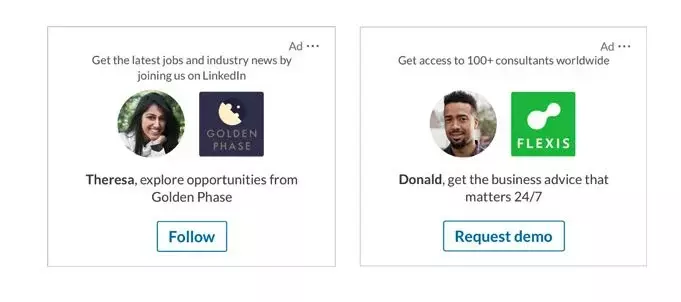
While LinkedIn Ads work similarly to Facebook, the user base is very different.
Since it’s more of a “professional” network, users often visit the site in the context of their jobs. They look for opportunities to network, hire, get hired, and grow their businesses.
Even though LinkedIn isn’t as big as Facebook, research has shown that LinkedIn is, by far, the best network to advertise on if you’re trying to drive B2B sales.
LinkedIn Ads provide a unique opportunity to connect with those in charge of purchasing decisions for other businesses.
8 Steps to Starting a PPC Marketing Campaign
Starting your first PPC marketing campaign may feel surprisingly simple—you could do it in just eight steps. Remember, ad quality plays a large part in your campaign’s success, so make sure you take your time and focus on each step.
1. Figure Out Your PPC Budget
How much do you want to spend on your pay-per-click marketing? That’s my first question for you.
To begin with, you need to set an initial budget to test the waters. As a rough guide, you can look at industry benchmarks to understand how much you’re likely to pay for each conversion.
Once you have an overall budget in mind, set daily and lifetime spend caps for your campaigns.
This is an important part of creating a PPC marketing campaign because your budget will greatly impact your ads’ success rates. Google Ads gives you good tools to help with this, and it’s worth following Google’s recommendations because its algorithms are designed to maximize your return.
You’ll be able to see an estimate of how many clicks your budget is likely to get you. From there, you can work out your potential return on investment based on your anticipated conversion rate.
If your budget doesn’t allow you to get meaningful results, it might be worth looking at some alternative marketing methods.
2. Set Your Campaign Goals
Different businesses will have different goals for their pay-per-click campaigns.
For example, if you’re doing a pre-launch campaign for a startup, your goal might be to drive traffic to the site and create awareness. If you’re selling a product, your main goal may be conversions.
The goals you set will have a big impact on your marketing campaign because each goal has a different value. A click isn’t as valuable as a lead or a conversion, and your cost-per-click should reflect this.
Setting up your campaign with the right goals allows you to better target the correct audience and accurately measure your return on investment. You’re paying for the click, not what the customer does afterward, when you use PPC—the click costs the same whether they purchase or not.
Consider who you want to click your ad and what actions you want them to take. When you understand this, optimize your entire campaign to encourage people to take those actions, which should bring down your costs.
3. Figure Out What Type of Campaign to Run
Another element to think about with PPC marketing is what type of campaign you’re going to run. There are lots of options here, each giving you flexibility over how you reach your target audience:
- Search ads: Ads showing at the top of search engines
- Social ads: Ads on social media platforms
- Remarketing ads: Ads that target people who have already visited your website
- E-commerce ads: Ads on Google Shopping that are focused on selling products
- Instream ads: Commonly seen on YouTube, played before a video loads
- Display ads: Dynamic ads showing on third-party websites, such as the one below from Redline
All these options give you the tools you need to target specific audiences. You need to find out where your audience hangs out and what they respond to. This will change depending on the buyer personas you’re trying to reach.
You don’t have to commit to one particular type of ad, and many businesses find a mix of different ad formats works best for them. However, it’s important to keep an eye on your ROI for each ad type so you can tweak your strategy accordingly.
4. Research Your Keywords
Keywords are one of the main tools you’ll use to target your audience, and your keyword research can make or break your campaign.
While you probably have a reasonable idea of how your customers search for your products or services, you need to narrow them down to those that result in people taking action.
A big part of this is understanding user intent. For example, who is more likely to make a purchase: someone searching “what is SEO?” or someone searching for “best keyword research tool?”
It’s probably the second one because of where that search fits into the buyer’s journey. Where people are in the buyer journey dictates how likely they are to make a purchase, so the keywords you choose need to reflect which stage you’re targeting.
Keywords that attract people who are further along in the buying process will generally cost you more, but they’re also more likely to lead to conversions.
Once you’ve got a list of keywords you’ll want to categorize them in ad groups. When setting up ad groups, there are two main components: giving them names and picking who you’ll target with ads.
I’ll assume that you can think of names for your ad groups, but the targeting in the search query is a bit trickier.
If you target the wrong people, it doesn’t matter how good your ads are, you won’t make money because no one will do a search query.
For search engines, you’ll have to choose keywords to show your ads. There are three main types of keywords (with a few variants): exact, phrase, and broad.
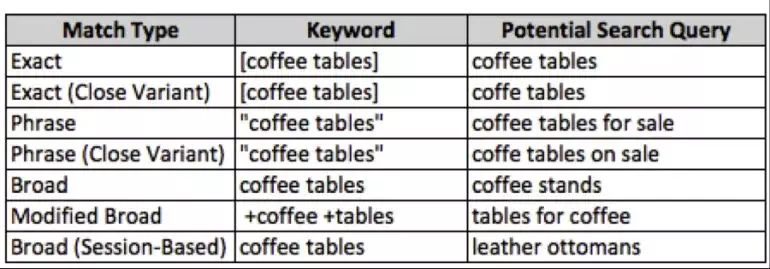
If you pick the exact keywords you want your ad to show up for, you’ll have the highest conversion rate.
However, you might end up missing out on some great related ad text keywords, which is why you might want to use phrase match keywords as well.
Phrase match keywords will show your ad anytime a search query contains the keyword that you’ve chosen.
This can be bad because you might show up for “buy coffee table cleaning supplies” if your keyword was “buy coffee table”. Assuming that your landing page sells coffee tables, this would never be profitable.
5. Bid On Your Chosen Keywords
Most platforms give you different bidding options based on your goals. With Google Ads, this allows you to optimize for:
- target CPA (cost per action)
- target ROAS (return on ad spend)
- maximize clicks
- maximize conversions
- maximize conversion value
- target impression share

Google will automatically bid on your behalf so it can optimize for your desired goal, but you still have some control over your bid. If you optimize to maximize clicks, for example, you can set a maximum bid. If you maximize for conversions, you can set a target cost per action.
It’s important to remember that Google is there to help you get the most out of your ad spend. The algorithms are finely tuned to achieve this. It’s often wise to use Google’s recommendations, especially when starting out.
6. Channel Your Inner Copywriter
If you want your ads to get clicks, you’ll need to learn the art of persuasive copywriting.
You’ll usually need to write up to four parts of the ads you place:
- Headline: The title of your content/landing page (doesn’t have to match exactly, but better if it does)
- Description: Why the user should click on your link (urgent call to action)
- URL/link: Where are you sending the user when they click this text ad component
- Network-specific elements: Things like sitelinks, likes, and shares
Some ad networks are more text-based, like search engines, while social media PPC networks are typically more image-based (and those images get a better click-through rate).
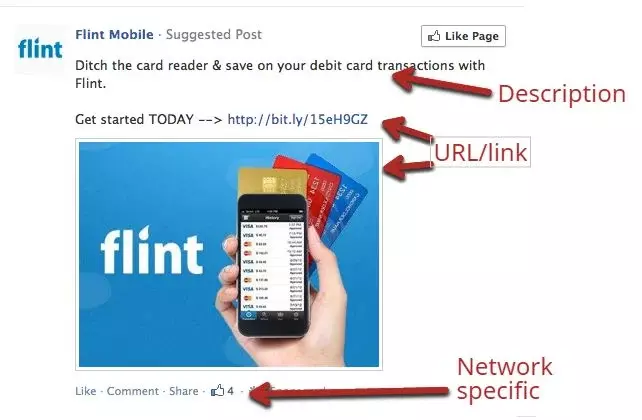
Your click-through rate depends heavily on the headline and/or description of your ad.
There are two approaches:
- Relevance: On search results, ads that are most relevant to the query will get the best click-through rate.
- Curiosity: On social networks, ads that invoke the most curiosity will get the best click-through rate.
It’s not easy to make great headlines and descriptions, which is why great copywriters are paid so much for ad text. However, you can learn if you practice writing powerful headlines and great descriptions over time.
Finally, you’ll often face limitations on how much space you have. For example, on Google Ads, you’re limited to 25 characters for the headline. So always look up the character limit of the network that you’re using
7. Create Keyword-Focused Copy With Unique Landing Pages
Getting people to click your ads is only a small part of what you’re trying to achieve. It’s what happens when people land on your page that’s key.
If you’re advertising on search engine results pages, you want to provide the searcher with their ideal landing page, which is often a sales page if you picked your search query keywords correctly.
For example, if you advertised on the keyword “buy coffee maker”
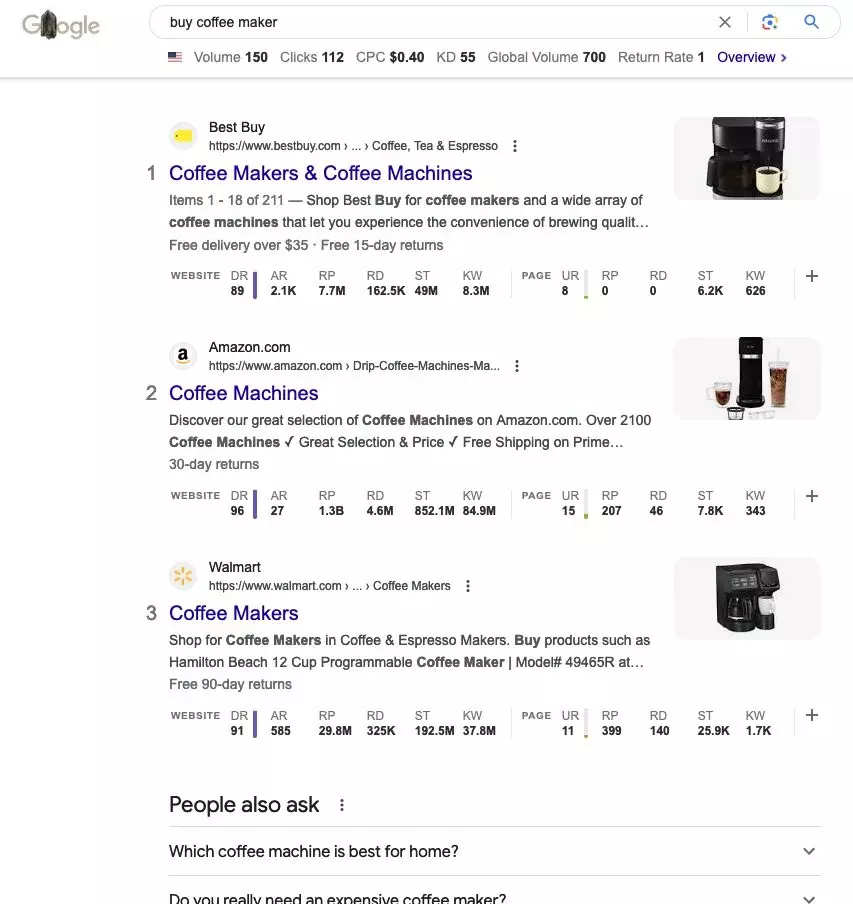
It’s obvious that the searcher wants to buy a coffee maker. They’d probably appreciate a few different choices. But their call to action is clear: we need coffee.
In this case, the landing page is perfect because it’s a sales page for coffee makers. It’s going to convert visitors into buyers at a fairly high rate.
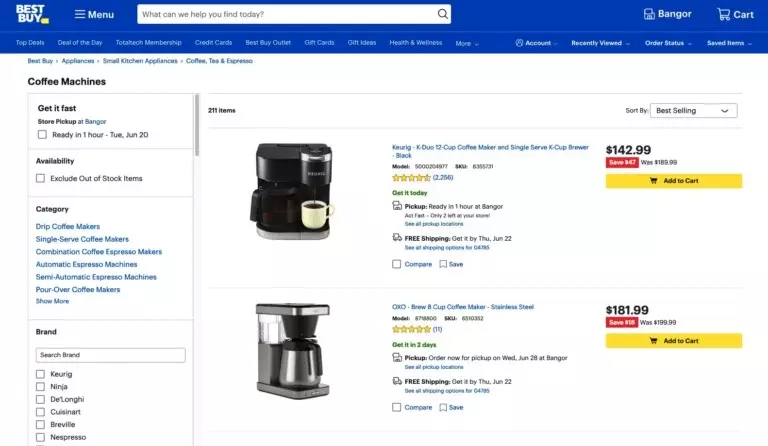
Keep in mind that users on social networks don’t have any obvious commercial intent so ad text can seem out of place or annoying.
If you’re selling coffee makers, you can’t really link directly to a sales page.
Instead, it’s best to combine social PPC ad copy with email (the original online text ad) marketing.
Offer some sort of lead magnet on your landing page to capture your target’s email address. Then, send them valuable content before finally pitching them on your product. Make a strong call to action with urgency.
There are two main approaches that you can test, both of which can be successful.
The first is to use a standard, simple landing page. Offer them a bonus in your ad text and have them sign up for your list to get it.
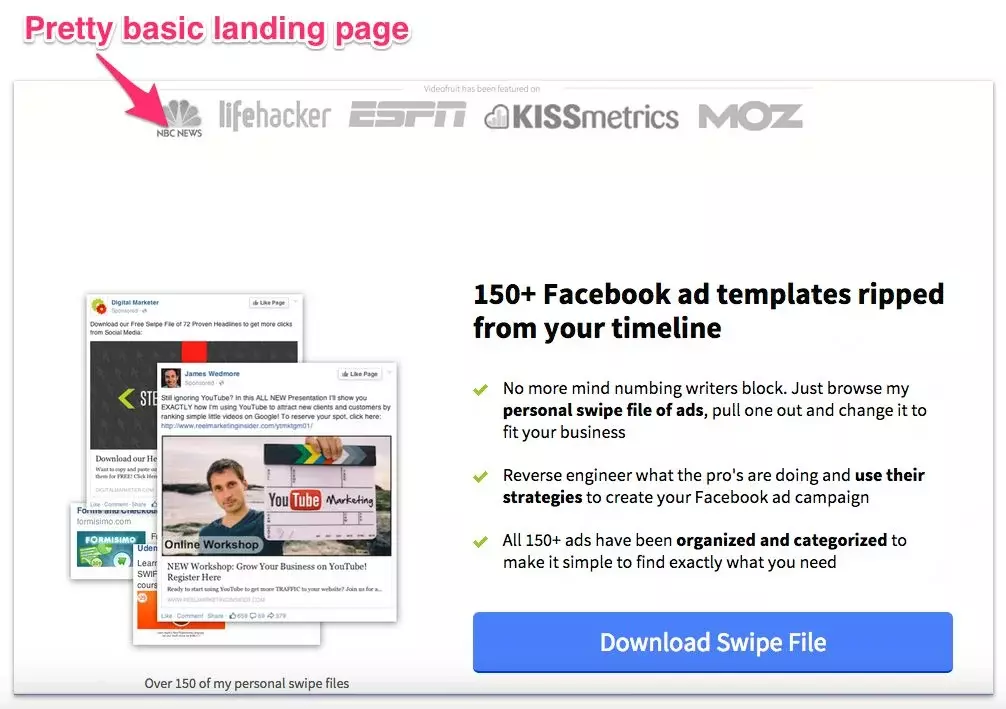
The downside of this method is that many will unsubscribe right away or forget who you are.
The alternative method is to send them to one of your most popular posts. If you use content upgrades, you might have a post that converts at 10-20 percent, which would be perfect for this.

Since they’ve already read your content, they will likely convert better a little later on with the right PPC ad copy.
However, you should try both, since either approach can be fruitful, depending on your specific audience and business.
However you create your landing page, it needs to offer a good user experience and be relevant to the ad the user clicked. People want quick access to the information they’re looking for, and if your landing page isn’t relevant to their keywords, they won’t hesitate to click back to Google.
In short, your PPC landing pages need to be optimised and A/B tested to make sure you’re getting the most out of them.
8. Optimize and Scale
Some marketers aren’t scared of PPC marketing at all when they hear about it. In fact, they’re the opposite—they’re too excited about it.
They hear that all you need to do is create a profitable campaign and then increase your budget and you’ll make millions.
The truth is, it’s not that easy (even though those results might eventually be possible).
ROI Always Comes First
The fact is, unless you have a profitable ad, you can’t ever scale up.
If you’re spending a lot on an ad that has a poor return on investment (ROI), you’ll end up quickly losing a ton of money, never improving your quality score and hate PPC marketing forever.
Getting a profitable ad is one of the hardest parts of the process. Many never get past this stage.
All PPC marketing platforms have some sort of reporting dashboard that will show you how much you’re paying per click, and possibly per conversion. To determine your ROI, you need to divide your return (profit per sale), by the cost of getting that sale (conversion).
If you make $10 off of a conversion and can get a conversion for $5, you’re in great shape and should spend as much as you can on that campaign.
But, if it takes $15 per conversion, you can’t run it profitably. Your goal for your first ads should be to get around breakeven ($9.5-10.5 per conversion) and then optimize it further (more on that soon).
Once you have a profitable campaign, there’s a catch. You can only scale up to a certain maximum before you’ll see diminishing returns. This is because there are only so many people searching for something or with a specific set of interests.
From there, you’ll have to pick new keywords and interests to target. As you go further away from your optimal keyword/interest groups, your conversion rate will frequently decrease (because the users are less targeted).
At some point, increasing the number of clicks you get will no longer increase your overall profit. That’s why you can’t just scale up indefinitely and make millions.
Split Test Ads to Improve ROI
When it comes to PPC marketing, reducing the cost of your clicks by even a few percentage points can make a huge difference.
Split testing involves making two identical ads where you only change one element, like the headline or description. That way, you can know if that one change increases or decreases your results. It may also have no effect.

What split testing will do is help you to optimize your click-through rate (CTR). Most advertising networks factor your CTR into how much you pay per click. For example, it is one of the factors in an Ads’ quality score.
On top of split-testing your ads, you should also split test your landing pages.
When a visitor lands on your page, you want to have the best chance of converting them into a subscriber or customer. If you’ve never done split testing before, it will take a bit of time to learn, but the results will be worth it.
Once you know what you’re doing, this ongoing split testing won’t take much time. If you plan well and work efficiently, you’ll only have to spend a few minutes a day (on average) running your split tests.
Good Ads Won’t Last Forever
Say you optimize an ad as much as you can and are making a healthy profit on your advertising campaign, are you set for life?
Unfortunately, no.
What happens over time is that your PPC campaign will become stale and your ROI will decline as your ad rank does.
The main factor behind this is that competitors will catch up to you (sometimes even copying your ads) and that you often have a limited pool of target users. As you start advertising to the same users over and over, your ads will become less effective.
There’s not too much you can do to combat this, other than to proactively create new ad campaigns as your current ads appear to be getting less effective.
FAQs
What does PPC stand for in marketing?
PPC stands for Pay-Per-Click in marketing. This term denotes a digital advertising model where advertisers pay a fee each time their ads are clicked by internet users. In this way, PPC effectively buys visits to your website, as opposed to organically earning them through SEO efforts.
What is PPC in marketing?
PPC in marketing refers to a form of online advertising where advertisers place ads on platforms (like search engines or social media), and pay a fee when those ads are clicked. These ads often appear in search results or designated ad spaces, targeting potential customers who are already searching for similar products, services, or content.
What is the purpose of PPC?
The purpose of PPC marketing is to increase website traffic, brand visibility, and ultimately, conversions. When done correctly, it can lead potential customers directly to your site at the exact moment they’re demonstrating interest. The ultimate goal is to convert these users into customers, making the small fee for the click a worthwhile investment.
How does PPC work?
PPC marketing works on a bidding system. Advertisers select keywords relevant to their business and set a maximum budget they’re willing to pay per click. When a user’s search matches your keywords, your ad is eligible to appear in the search results. If your bid is among the highest, your ad will be displayed. Upon clicking your ad, the user is directed to your website and you’re charged based on your bid amount.
Conclusion
PPC marketing is an amazing way to reach a highly-targeted audience quickly. Through platforms such as Google, Bing, Facebook, Instagram, and many others, you can set up paid ads in seconds. Once approved, they could be seen by tens of thousands of people, depending on your budget.
While reaching your target audience is vitally important in marketing, the most important thing is what you do when you have people’s attention. This is why you need to give your paid campaigns the care and attention they need or find a company to do it for you.
When you find the right balance with PPC and have your ads perfectly optimised, it can bring you an excellent return on investment and become a vital part of your digital marketing weaponry.

